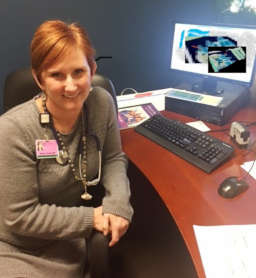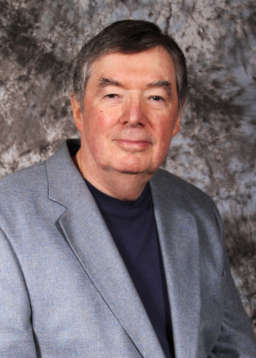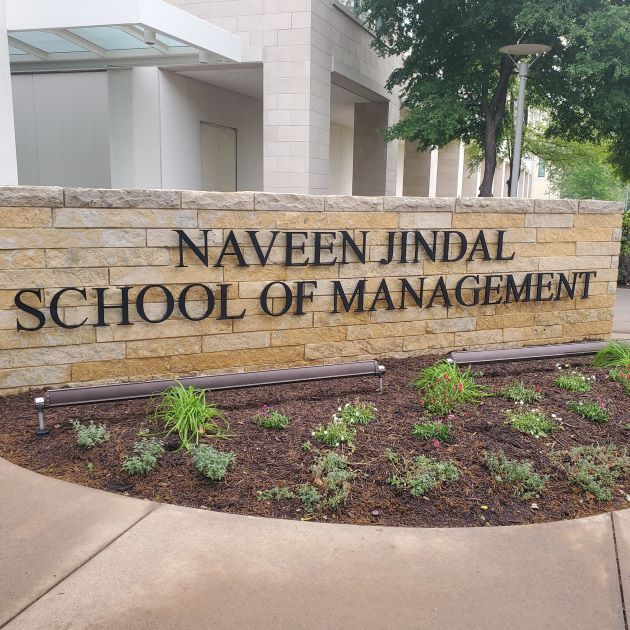
The healthcare industry has changed so much in recent years that physicians struggle to navigate the ever-increasing complexity of business operations in their practices.
Megan Conoley, MD, an internal medicine and pediatrics physician at USMD Health System, recently earned a Healthcare Leadership and Management for Physicians Certificate (HLMPC) offered by the Naveen Jindal School of Management because she understood that she would have been at a distinct disadvantage had she not enrolled in the online course.
“Medicine is one of the most rapidly changing industries right now, Conoley said. “To understand how it’s changing and what’s coming down the pike — to give yourself a picture of how you can adapt to it and how it’s going to look different — it’s an important tool.”
Michael J. Deegan, MD, DM, was a practicing physician who made the transition to leadership in the healthcare industry. After obtaining his medical degree, he realized that he would need to return to school to learn the management skills necessary to further his career. He did this by pursuing a Doctor of Management degree and then transitioned to a role as executive vice president and chief clinical and quality officer at the Arlington-based hospital chain Texas Health Resources.
Deegan made another career change in 2012, joining the Jindal School’s faculty to put together the HLMPC program. The program has helped round out Conoley’s skills and those of more than 100 physicians — skills that are increasingly becoming a prerequisite to success in an industry that is undergoing a fundamental realignment.

“Most physicians have exceptional scientific and medical knowledge, but their business acumen is modest,” Deegan said. “And their interpersonal and communication skills often need to be strengthened.”
The 33-week HLMPC course offers an online, asynchronous delivery model that allows busy physicians to study the material at their convenience and connect with fellow physician participants in “threaded” online discussions.
“The class gave me a much bigger perspective of population management and a team-based approach to the patient-centered medical home,” Conoley said. “It gave me a framework on which to hang the details.”
She viewed several online lectures, read assigned readings, took a quiz and responded to discussion questions related to a case study after each unit.
Students can select one of two case studies — one based on hospital groups while the other is geared toward primary-care practice transformation. Students choose their track at the beginning and apply their newly acquired knowledge to resolve case study challenges throughout the course.
“Completing the course took a lot of work, but it was well worth it,” Conoley said. “It introduced me to a model practice of five or six physicians providing traditional fee-for-service medicine. Then it took me through the process of making changes to become more of a team-based, patient-centered medical home. It really helped get me out of the day-to-day rush of taking care of patients and allowed me to take a step back and think about what would be the most efficient use of each team member’s time and licensure level.”
Conoley explained that the population-management and patient-centered medical home model “is really much better for patient care and showing markedly improved patient outcomes. It allows primary-care providers to really do their job the way it is supposed to be done. The patients are the reason we do this job to begin with.”
When asked what she would say to physicians who were thinking about whether they need to take the course, Conoley focused on the economics.
“It’s changing significantly with the transition from fee-to-service to taking on risk,” she said. “That’s going to be coming pretty quickly, and most people are interested in their pocketbook.”
Regarding Conoley’s comments, Deegan said “that fits well with the triple aim of enhancing the patient’s experience, improving the health of our communities and bending the healthcare cost curve going forward,” all goals of the Healthcare Leadership and Management for Physicians course.
Dr. Conoley is one of 27 physicians who completed the course this year as part of a UT Dallas – Texas Medical Association effort to help Texas physicians cope with the rapidly changing healthcare delivery environment. Based on course success to date, it will be offered to a national physician audience for the first time beginning in January of next year.





